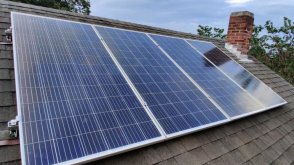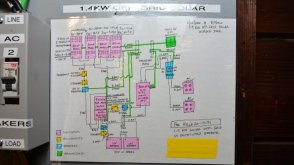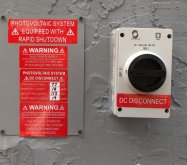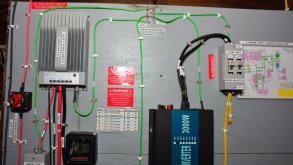wade0000
New Member
- Joined
- Oct 30, 2020
- Messages
- 66
Hello everyone,
New to the forum.
Back in March when it was apparent we were going to be in a long lock down mode and would be stuck at home a lot, I decided to put in an off-grid system for my detached garage.
I wanted to design, purchase and install everything in order for me to 1) have enough to do thru the summer and 2) save money.
It certainly was a learning experience and I was happy that I passed city electrical inspection since a building permit was required.
It's 1.4 KW
Four(4) 350W panels connected in series-parallel
EPEVER MPPT 40A charge controller
Four(4) 12V 200AH AGM batteries connected in series-parallel
3000W 24V pure sine wave inverter
Run to 2 120V AC gang boxes and out to pond (running 100W pond pump, pond lighting, garage lighting, garage receptacles, garage security cameras)
Here are some photos... I'd love to hear your questions!!



New to the forum.
Back in March when it was apparent we were going to be in a long lock down mode and would be stuck at home a lot, I decided to put in an off-grid system for my detached garage.
I wanted to design, purchase and install everything in order for me to 1) have enough to do thru the summer and 2) save money.
It certainly was a learning experience and I was happy that I passed city electrical inspection since a building permit was required.
It's 1.4 KW
Four(4) 350W panels connected in series-parallel
EPEVER MPPT 40A charge controller
Four(4) 12V 200AH AGM batteries connected in series-parallel
3000W 24V pure sine wave inverter
Run to 2 120V AC gang boxes and out to pond (running 100W pond pump, pond lighting, garage lighting, garage receptacles, garage security cameras)
Here are some photos... I'd love to hear your questions!!












